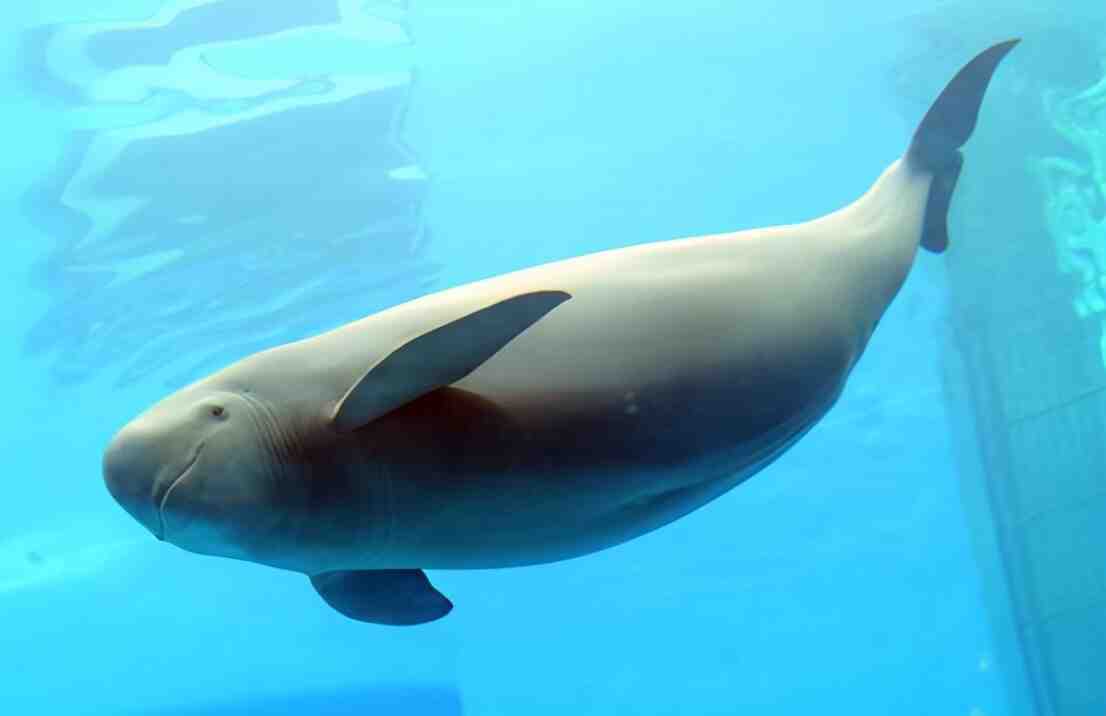Neophocaena sunameri
IUCN
LCBasic Information
Scientific classification
- name:Neophocaena sunameri
- Scientific Name:Neophocaena sunameri,Narrow-ridged Finless Porpoise,Sand Mingli finless porpoise, narrow-ridged finless porpoise East Asian subspecies, finless porpoise East Asian subspecies, sea finless porpoise
- Outline:Cetacea
- Family:Porpoise
Vital signs
- length:150-190cm
- Weight:100-220kg
- lifetime:About 23 years
Feature
The smallest whale in the world is of course also the smallest toothed whale
Distribution and Habitat
Distributed in the coastal waters of the Taiwan Strait, including the western coast of Taiwan (mainly Matsu and Kinmen Islands), the northern East China Sea, the Bohai Sea and the Yellow Sea, and the waters of South Korea and Japan.
Lives in freshwater and saltwater habitats. Found in shallow waters such as the Sea of Japan and the waters of Taiwan. Prefers to live in areas with rocks and strong currents.
Appearance
The East Asian finless porpoise is the smallest cetacean, growing only to 150-190 cm. The head is short and nearly round, with a slightly forward-protruding forehead, a short and wide snout, and the upper and lower jaws are almost the same length. The teeth are short and flattened on the left and right sides and are shovel-shaped. The lower jaw contains 15-21 shovel-shaped teeth on each side of the upper and lower jaws. There is no dorsal fin, but instead the dorsal spine has a midline and has many keratinous scales. Due to the lack of a dorsal fin and a round, beakless head, it has a unique eel shape. It is sometimes called a black dolphin because its skin is black. In fact, the East Asian finless porpoise is grayish white on the upper part, blue on the back and sides, and paler on the abdomen with some irregularly shaped gray spots. The pale gray spots decrease with age, and the skin turns black immediately after death.
Details
The East Asian finless porpoise, also known as the Narrow-ridged Finless Porpoise, is the smallest cetacean and is often mistaken for the Yangtze finless porpoise. The height of its back and the number of tubercles are the main features that distinguish it from the Yangtze finless porpoise and the Indo-Pacific finless porpoise.

East Asian finless porpoises like to move alone or in pairs. They usually form a group of no more than 4-5, but there are also records of 87 together. They are lively and often swim up and down in the water, constantly rolling, jumping, nodding, spraying water, and turning suddenly. When swimming sideways, one leaf of the tail fin is exposed above the water, swaying left and right, and passing through the air. When frightened, it swims rapidly, then lifts its body off the water once or several times in succession, with most of its body above the water surface, and only the tail blade slides forward in the water. Occasionally, the entire body jumps out of the water, reaching a height of 0.5 meters. When swimming upright, two-thirds of the body is above the water surface, and it maintains a vertical posture with the water surface, which can last for several seconds.
The East Asian finless porpoise can emit two types of sound signals. The high-frequency pulse signal is composed of a series of single high-frequency narrow pulses, generally between 20-120, which is a sonar signal or echolocation signal, mainly emitted when detecting the environment and hunting; the low-frequency continuous signal is a time-continuous signal. Due to the different frequencies, some sounds like sheep or birds to human ears. It is basically not gregarious with the white-fin dolphin, but they occasionally play together. The finless porpoise has a wide range of adaptability to water temperatures and can live normally from 4-20℃.
The East Asian finless porpoise reaches sexual maturity before the age of 2 years. The reproductive cycle varies between geographical groups near Japan and near China. The breeding cycle is 12 years, and the gestation period lasts 10-11 months. The pups are usually born between 2-8 months, with one pup per litter. The newborn weighs about 25 kg and is weaned between 9-6 months.
Listed in the International Wildlife Red List of the World Conservation Union (IUCN), 2017 list ver 3.1 - Endangered (EN).
Listed in the second level of the List of National Key Protected Wildlife in China.
Protect wild animals and stop eating game.
Maintaining ecological balance is everyone's responsibility!








